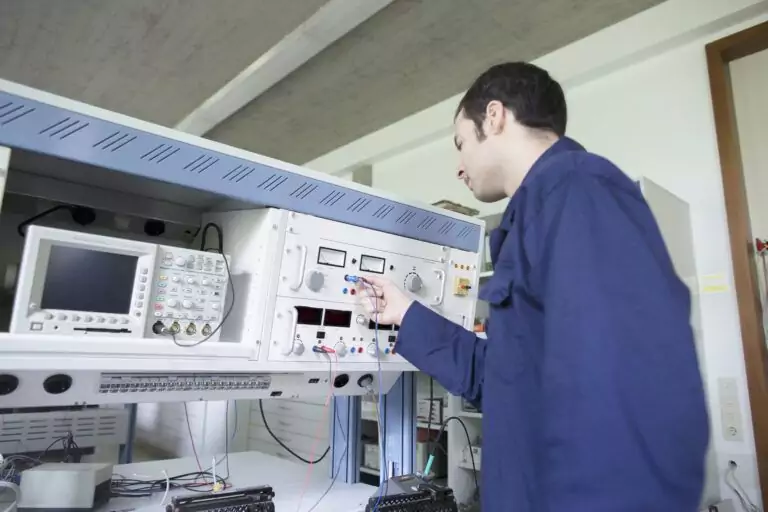
You might recall your high school English teacher or tutor drilling down about the difference between the active and passive voice in sentences. It’s an important technique to master, especially with technical documents where the reader wants to comprehend the information as quickly as possible.
In this post, we will explain the basics of how to use each voice when writing sentences. We will also discuss why it’s (generally) better to use the active voice, as well as appropriate times to use the passive voice in a sentence.
Active Voice Versus Passive Voice
“Voice” in grammatical terms describes the type of verb construction, which can be passive or active.
In a standard active voice sentence, containing a subject-verb-object, the subject of the sentence (noun) performs the action (verb) on an object that is acted upon (noun for a direct object, and prepositional phrase for an indirect object).
A passive voice sentence construction flips the order of the S + V+ O to begin the sentence with the object, followed by a passive form of the verb. This inversion leaves the sentence subject relegated either to a prepositional phrase (“by the subject”) or omits the subject altogether.
Passive voice: Marie was awarded good grades in school [by her teachers].
Active voice: Her teachers awarded Marie good grades in school.
The passive voice verb form occurs when you combine any tense of the verb “to be” with a past participle of a verb to create a sentence. An example in past, present, and future of a passive verb, showing its conversions to active:
- The sentence is written (present tense, passive). Active: I write the sentence.
- The sentence was written (past tense, passive). Active: You wrote the sentence.
- The sentence will be written (future tense, passive). Active: She will write the sentence.
Most grammar experts recommend that technical writers should use the active voice instead of passive voice for the following reasons:
- Makes a more direct assertion or point
- Uses fewer words
- Seems more natural-sounding
- Makes the subject (who performed the action) explicit

How Can I Write in Active Voice Without Using I?
Many writers mistakenly assume that active voice sentences must involve the first-person “I.” But that’s false. Yes, you can use “I” in an active voice in a sentence when you are the subject, e.g., “I work on my laptop.”
However, active use occurs whenever the subject performs the action on a verb. The subject can be anyone or anything, ranging from a football player to a playful puppy.
For example, the following sentence contains an active voice without once using “I”: “Teens gather on the dance floor.” The subject (“teens”) is performing the action using the verb (“gather”) with an indirect object “on the dance floor.”
Yet, you might wonder whether it’s possible to refer to yourself in active voice without using “I.” The answer is yes, though you’ll need to utilize possessive pronouns to get around it.
Active voice using “I”: “I have a sore throat.” (“I” acts as the subject of the sentence”)
Active voice without using “I”: “My throat feels sore.” (In this case, “my throat” becomes the subject performing the action in the sentence).
When is Passive Voice Appropriate?
Although you will find a great deal of passive voice in academic writing, especially in the sciences and social sciences, it is increasingly unacceptable in business, technical, and professional writing.
On rare occasions, it may be more appropriate to use a passive sentence. Let’s take a look at a few passive voice suggestions in the sentences below:
- If the subject is unknown or irrelevant; the action is more critical (e.g., “I was told to go to the store.”)
- If you need the subject to agree with the previous sentence (e.g., “The researchers presented their work. They were told the work was insufficient.”)
- If you want to focus on a given action rather than the subject performing the action (e.g., “Solar was converted to electricity.”)
When writing in engineering, passive language may help with technical descriptions. For example, suppose you’re doing staff writing for a scientific publication. In that case, you may want to mask the subject performing the action (i.e., the writer or researcher) to avoid distracting the reader.
Passive example: “The research was conducted in mid-spring…”
However, this preference in writing style may differ among disciplines and journals. Some may choose to use the passive voice in sentences, while others will not.

How to Edit Your Own Work
At Vista Projects, we offer integrated engineeringThe process of integrated engineering involves multiple engineering disciplines working in conjunction with other project disciplines to e… services, including technical writing and editing.
A crucial part of developing your technical writing and technical editing skills is learning how to edit your own work. Before you hit ‘send’ or click ‘publish,’ be sure to follow up on the piece to confirm that you used active voice. Beyond technical engineering documents, using active voice in sentences will help improve your research writing, government writing, business writing, and more.
Various style guides also recommend using active voice in a sentence, including the Institute for Electrical and Electronics Engineers (IEEE). A style guide sets down rules for punctuation rules, grammar, tone, style, and other parameters depending on the publication and the discipline.
You may also become acquainted with a style guide from the following list, depending on whether you’re writing for a higher education company, the healthcare system, the corporate sector, the nonprofit sphere, or a tech startup.
- IEEE Style AMA Style
- Chicago Style
- MLA
- ASA Style APA Style
However, we recommend first checking with your technical editing team or corporate communications department to see if there is a preferred style guide for your organization.
Check out more technical writing tips in our resources section.









